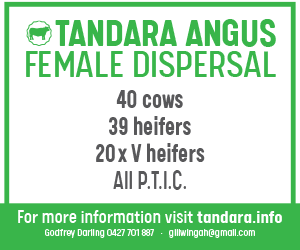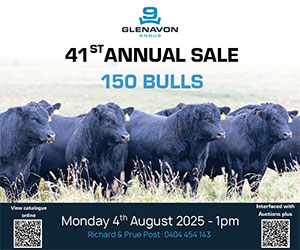Which EBVs are published?
There are currently twelve EBVs published in the UltraSELECT genetic evaluation, covering calving ease, growth, fertility and carcase, as well as two indexes. As with all EBVs, the absolute value has no inherent relevance but is used to compare one sire to another. The specific EBVs and their descriptions are:
Calving ease direct (CED) is the difference in percentage of unassisted births when a sire is bred to first calf heifers, when compared to progeny of other sires. A higher number is desirable.
Calving ease maternal (CEM) is the difference in percentage of unassisted births of a sire’s daughters as first calf heifers when compared to daughters of other sires. A higher number is desirable.
Birth weight (BW), reported in kgs, is the difference in average birth weight of progeny compared to that of other sires.
Weaning weight (WW), reported in kgs, is the difference in weight of progeny averaged at 205 days of age to calves of other sires.
Yearling weight (YW), reported in kgs, is the difference in weight of progeny averaged at 365 days of age to calves of other sires.
Mature cow weight (MCW), expressed in kgs, is a predictor of the difference in mature cow weight of a sire’s daughters when compared to daughters of other sires.
Milk (M) predicts the sire’s genetic merit for milking ability as expressed in his daughters, compared to the daughters of other sires. Milk accounts for the part of a calf’s weaning weight attributed to milking ability of the dam.
Heifer pregnancy (HP), reported in percentile units, is the probability of a sire’s daughter becoming pregnant during their first breeding season compared to daughters of other sires.
Scrotal circumference (SC), reported in centimetres, is the difference in yearling scrotal circumference of a bull’s male progeny compared to sons of other sires.
Ribeye area (REA), reported in square centimetres, is the difference in ultrasound ribeye area of a bull’s beef bound progeny compared to progeny of other sires.
Fat thickness (FT), reported in millimetres, is the difference of ultrasound fat thickness on a carcass when measured between the 12th and 13th ribs of a bull’s beef bound progeny compared to progeny of other sires.
Intramuscular fat (IMF), reported in decimal terms, is the difference in the percentage of ultrasound intramuscular fat of a bull’s beef bound progeny compared to progeny of other sires. This is highly correlated with USDA marbling score, a major determination of USDA quality grade. As with all EBVs , the absolute value has no inherent relevance but is used to compare one sire to another.
Additional EBVs may be added to the UltraSELECT evaluation in the future. This will depend on further R&D to assess technical feasibility including phenotype compatibility.






